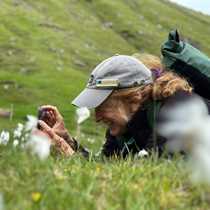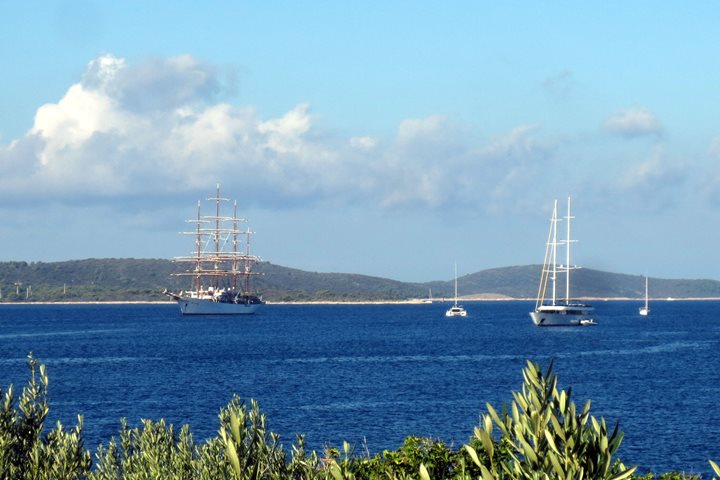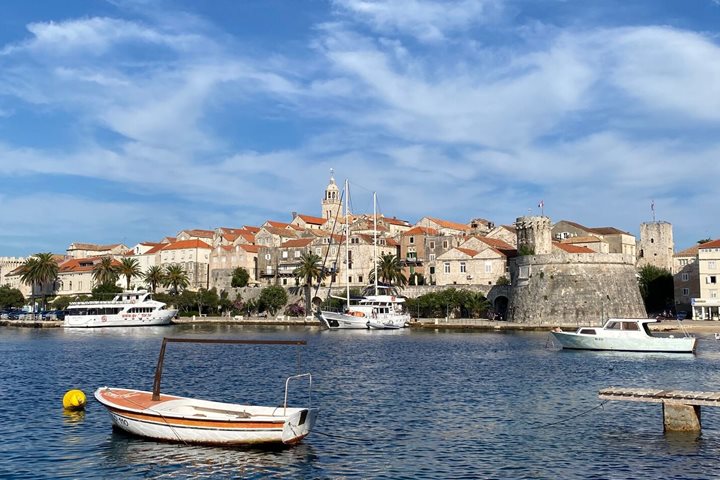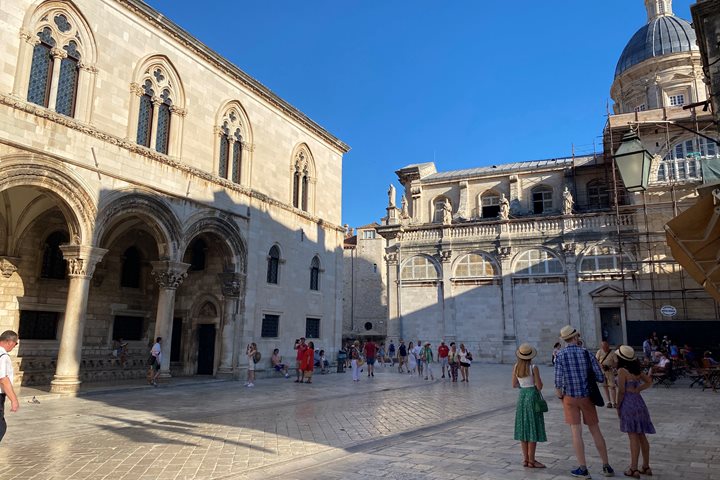Our journey through the enigmatic country of Albania began with a visit to the mountain town of Kruje. There, through guided visits to the Ethnographic Museum, set in an Ottoman-period home, and the Skanderbeg Museum, a Communist-era homage to the national hero of Albania, we explored just a few facets of this country’s complex past. Both museums are housed in the castle perched atop the town, and a meandering medieval market—boasting a colorful array of embroidered woolen goods, antique copper kettles, and delicate silver filigree—leads back into the town.
Departing Kruje, we proceeded to drive to the capital city of Tirane for lunch. Dining at the Bujtina e Gjelit—the Rooster’s Inn—we enjoyed organic Albanian specialties such as roast lamb, white beans, and beet salad. A traditional Albanian coffee, served alongside a heavenly walnut baklava, finished the meal. Before heading back to the port, we drove through Tirane, today an intricate mix of 19th- and early 20th-century buildings, Communist leftovers, and new construction.
Back at the rather industrial port of Durres—an important port city in the ancient world, as it is today—we re-embarked. Soon thereafter, a folk-dance group performed traditional songs and dances on the lido deck. Finally, as we departed Durres, a presentation on the Ottomans in the Balkans aimed to further explore the sometimes troubled relationship between ethnic Albanians and the Ottoman Empire.









